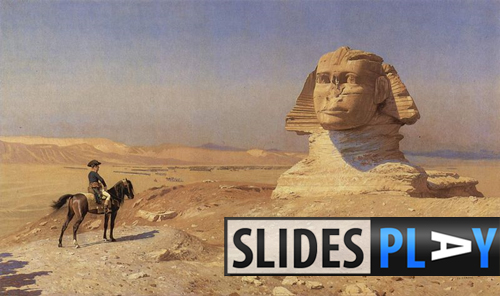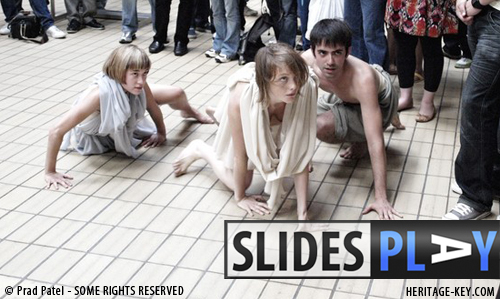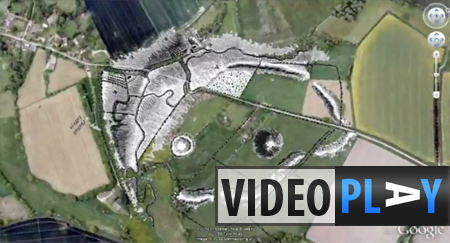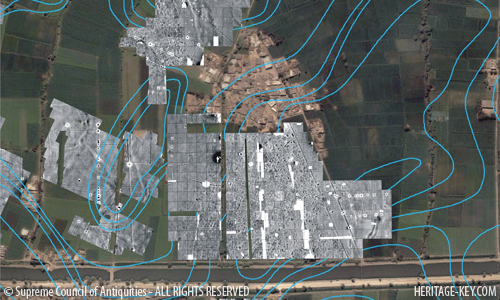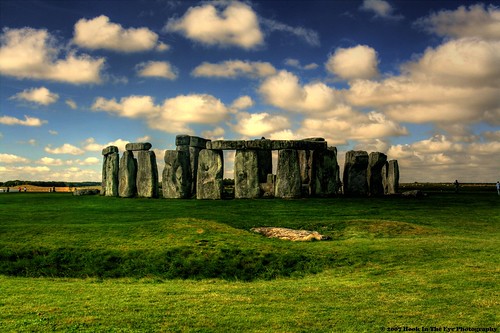The Great Sphinx of Giza is one of the world’s largest and oldest monuments, and isn’t without its mystery. Theories fly around regularly about whether there are secret tunnels or hidden halls under the Sphinx, which Dr Zahi Hawass, currently starring in the ‘Chasing Mummies‘ series, insists is not the case in this Heritage Key video (Watch the Video). But my question is much more simple – Whatever happened to the nose of the Great Sphinx? In a previous Heritage Key article, “Riddle of the Sphinx”, Robert Cook wrote about the legend that Napoleon’s troops used the Sphinx’s nose as…
-
-
Ever thought about a job that takes you across the length and breadth of Egypt, exploring the desert sands to find treasures and valuable artefacts that haven’t been touched in thousands of years?A career which gives you responsibility for some of the most famous and significant finds in history (as well as trying to get back others)?A vocation which earns you the nickname “Pharaoh” for your control over who gets to uncover the antiquities still to be found amidst the heat. And lets not forget starring in your own History Channel TV show! Dr Zahi Hawass, the Director of the…
-
It was with odd reluctance that I took the hand of a pretty young girl in Room 17 of the British Museum on Saturday afternoon as she dragged me to the opposite side of the hall containing the stunning Nereid Monument, but through her broken English, she assured me I wasn’t about to meet my maker as she placed me in position in a crowd slowly forming a circle. I’ve visited the British Museum in Bloomsbury, London countless number of times, but I’d never seen what was about to happen next. It took me a moment to realise the girl…
-
ripple flaked arrowhead, An Update on the dig at Marden Henge – Archaeologists have uncovered a 4,500 year old dwelling! According to the BBC, English Heritage volunteer archaeologist Jim Leary was excited by the discovery, saying “It’s exceeded all of our expectations”. The dwelling appears to have been constructed between 2500BC-2400BC and appears to be different to a normal home, with Leary suggesting it may have been a priest’s quarters. The finds echo those discovered a couple of years ago at Durrington Walls where several neolithic dwellings were also discovered. The newly discovered dwelling at Marden Henge, Wiltshire included an…
-
Egypt’s Cultural Minister Farouk Hosni announced today that the Austrian mission at Tell el-Daba has located the southern suburban quarters of the ancient city of Avaris, the capital of the Hyksos in the Second Intermediate Period (1664-1569 BC). The excavation team found this area using a combination of magnetometry and resistivity surveys. Dr. Zahi Hawass, Secretary General of the Supreme Council of Antiquities (SCA), said that the computer-generated images of the city, which is still buried under the ground, show a very detailed layout of ancient Avaris. Several architectural features including houses, temples, streets, cemeteries and palaces can be seen.…
-
The world’s most photogenic stone circle, Stonehenge, is the subject of a film called “Remnants” by Grant Wakefield which explores the Neolithic civilisation, looking at how we know so little about a culture which spanned over 3 millennia. With the Summer Solstice 2010 this weekend, it’s worth reminding ourselves of the beauty of this sacred ancient site. Heritage Key also has explored Stonehenge during the Spring Equinox (Watch the Video), and talked to Druid Frank Somers about how the stones came to be (Watch the Video). The Neolithic people vanished without leaving anything but their remnants, and it is these…
-
Last week two twin towers were opened in North London. But it wasn’t a revival of the Old Wembley – this was the much awaited opening of the Shri Vallabh Nidhi temple on Ealing Road. Costing a cool £16 million and taking 14 years to build, the temple (or Mandir, in Hindi) did not disappoint – contemporary buildings today simply do not contain the stunning detail that this Indian temple boasts. Stepping outside Alperton tube station and breathing that (unfresh) London air, I distinctly felt I was back in the multicultural environment of my youth. Looking around I saw a…
-
The Big Wild Goose Pagoda in Xi’an, China is a holy site for Buddhists, and a well preserved ancient relic. Built in 652 using a simple style of construction, the structure was created to hold Buddhist relics taken from India. It stands at 64.5 metres high, and its walls are engraved with fine statues of Buddha and calligraphy. China Roamer’s photograph shows a scene from the North Square – a 110,000 square metre waterscape and fountains plaza, the largest of its type inAsia. Composed completely of fountains, gardens, paths and sculptures, the area is perfectly portrayed in this night-time photograph.…
-
During a recent lecture I attended by astronomer Paul Murdin, which was hosted by Heritage Key, I learnt something which fascinated me. One of the commonly held beliefs has been that ancient societies before the Age of Discovery believed that the world was flat, but when I raised this during the Q&Asession after the lecture, I was surprised that this is what is known as ‘The Myth of the Flat Earth‘. That’s not to say there’s nothing in the belief that our ancestors feared falling off the edge of the world. Some ancient civilisations did indeed think that the world…
-
Singer and songwriter Kirsty Hawkshaw is going to be playing a special concert to raise money in aid of the crisis in Haiti on Saturday 27th March 2010 at 8PM(GMT). Heritage Key will be streaming the concert at Stonehenge Virtual where you too can listen and donate to the cause online. The earthquake in Haiti has created a humanitarian crisis and the effort to raise money in ongoing. Funds raised from the concert on Saturday night will go towards the foundry/haiti fund which has been formed by The Foundry in London in partnership with Ghetto Biennale, an artisan community in…

